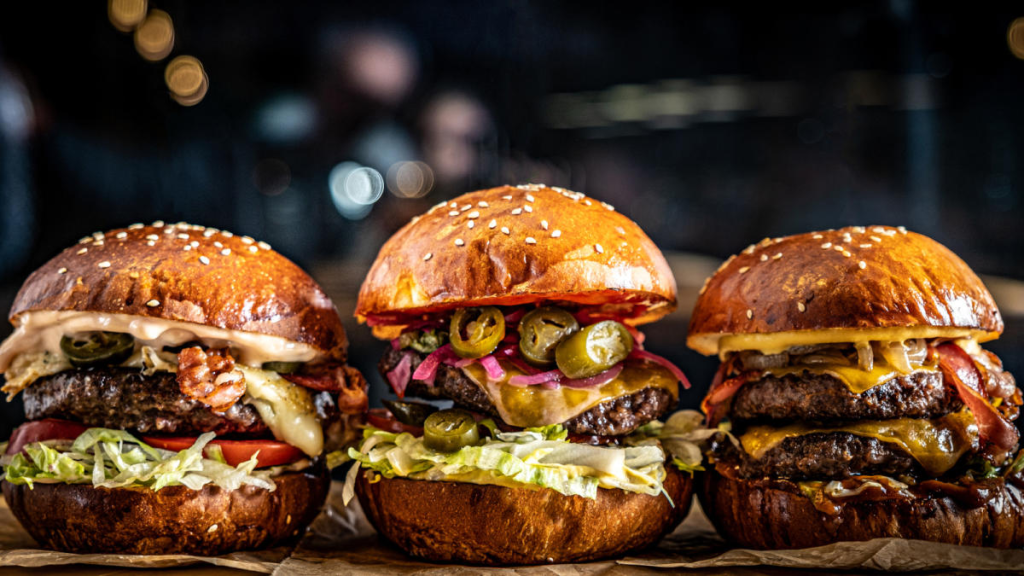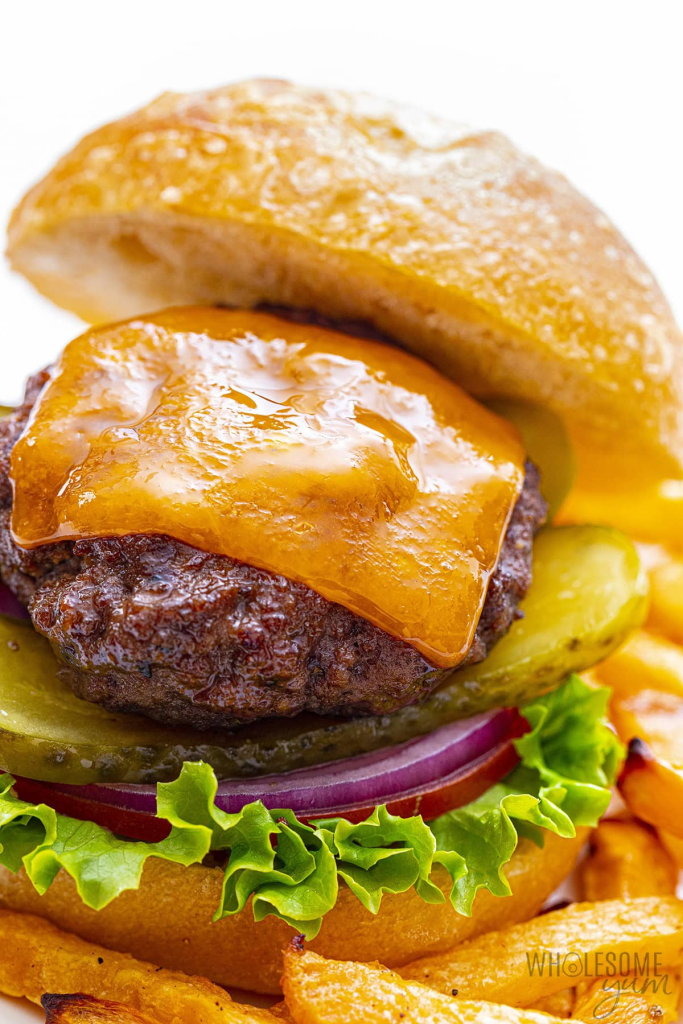There’s nothing worse than biting into your homemade burger only to find it dry, crumbly, and lifeless—especially when you were aiming for that juicy, diner-style perfection. Sound familiar? Don’t worry, you’re not alone. The truth is, most people unknowingly make a few key mistakes when it comes to cooking burgers at home. The good news? You can fix them. And once you do, you’ll never crave takeout burgers again.
Let’s break down exactly what goes wrong—and how to make it right.

Understanding Juiciness: It’s Not Just About Moisture
Juiciness isn’t magic—it’s science. When meat cooks, its proteins tighten up and squeeze out moisture. That’s why your burger can go from juicy to dry in a matter of minutes. So, what’s the secret to keeping that delicious moisture locked in?
It comes down to three main things: the type of meat you choose, how you handle it, and how you cook it. Nail these, and you’re well on your way to burger greatness.
Video: Gordon Ramsay Makes an All American Burger
Start With the Right Meat: Fat Is Your Friend
Let’s start at the butcher counter. Not all ground beef is created equal. If you’re buying that super lean 90/10 stuff (90% meat, 10% fat), you’re setting yourself up for a dry burger. For the juiciest result, you want ground beef with around 20% fat—that means 80/20 on the label.
Why? Because fat equals flavor and moisture. As the patty cooks, the fat melts and bastes the meat from within. Less fat means less moisture—and that’s when things get dry and disappointing.
Pro tip: If you really want to step it up, grind your own beef or ask your butcher for a mix of chuck, brisket, and short rib. It’s rich, flavorful, and makes an unbelievably juicy patty.
Forming Patties the Right Way: Less Is More

Here’s where many home cooks go wrong—they overwork the meat. The more you handle and compact it, the denser and tougher the burger becomes. Think of it like bread dough: the more you knead, the more gluten you develop. In burgers, that translates to chewiness—not the good kind.
So keep it simple:
- Gently shape your patty.
- Don’t mix in salt or seasoning yet (we’ll get to that).
- Make it about 1 inch thick and a bit wider than your bun.
- Press a small dent in the center with your thumb. This helps the burger cook evenly without puffing up like a meatball.
Master the Heat: Get That Sear

Whether you’re grilling or using a skillet, start with high heat. That initial blast creates a crust that locks in juices. Don’t flip too soon—give it time to build that golden brown exterior.
And whatever you do, don’t press down on the burger with a spatula. You’re not making pancakes. Pressing squeezes out the very juices you worked so hard to keep.
Use a thermometer if you’re unsure. For medium-rare, aim for 130–135°F. For medium, go for 140–145°F. Over 160°F? You’re officially in dry territory.
When and How to Season Your Burgers
Video: Anthony Bourdain’s 3 tips to a perfect burger
Let’s clear this up: don’t mix salt into the meat before forming patties. Salt dissolves proteins and pulls out moisture. That’s great for sausage—but terrible for burgers.
Instead, season the outside of the patty right before cooking. A simple sprinkle of kosher salt and black pepper is all you need. Want to get fancy? Add garlic powder, smoked paprika, or even a hint of chili flakes. But keep it on the outside where it enhances, not alters, the texture.
Give It a Rest (Literally)
You’ve cooked your burger perfectly. Great. Now don’t ruin it by cutting into it immediately.
Let it rest for 3 to 5 minutes after cooking. That short pause allows juices to redistribute instead of running all over your plate. It’s the difference between a dry burger and one that drips deliciousness with every bite.
Avoiding the Most Common Burger Mistakes

Let’s recap the pitfalls:
- Using meat that’s too lean? Dry city.
- Overworking the meat? Say goodbye to tenderness.
- Pressing down while it cooks? Juices gone.
- Skipping the rest period? Rookie move.
Even small changes—like making a thumbprint in the patty or using a meat thermometer—can totally transform your burger game.
Want a Restaurant-Quality Burger at Home? Do This
- Use fresh 80/20 beef or grind your own blend.
- Keep the meat cold and handle it as little as possible.
- Season only the outside right before cooking.
- Cook on high heat and resist the urge to press.
- Rest before serving and pair with a fresh, toasted bun.
And don’t forget the details. The right cheese (melted, please), fresh toppings, and a soft yet sturdy bun take a good burger and make it great.
Conclusion: The Secret to Juicy Burgers Is Simpler Than You Think
Making a juicy, flavorful burger at home isn’t hard—it just requires intention. Choose the right meat, treat it gently, and cook it with care. That’s it. No fancy gadgets, no trendy tricks. Just a back-to-basics approach that works every time.
So the next time you’re craving that perfect burger, skip the takeout and trust your own kitchen. With a little know-how and the right technique, you’ll be making burgers that your favorite restaurant would be proud to serve.


